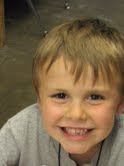From Food Navigator
Coeliac sufferers may benefit from buckwheat enhanced gluten-free bread
Related topics: Science & Nutrition, Cereals and bakery preparations
Enhancing bread formulations with buckwheat flour could create high quality, antioxidant rich products for the gluten-free sector, says new research.
The study, published in International Journal of Food Science and Technology, suggests that enhancing gluten-free bread with 40 per cent buckwheat flour could create gluten free bread “with more functional components and higher anti-oxidative and reducing capacities.”
“Buckwheat flour is a natural source of minerals and antioxidant activity,…[it] can be used for preparation of new buckwheat-enhanced gluten-free breads,” wrote the researchers, led by Dr Maria Soral-Smietana from the Polish Academy of Sciences.
Potential healing
Buckwheat has increasing popularity as a health food in many countries, and has attracted the attention of food scientists because of its potential healing effects, and high nutritional value .
Buckwheat flour contains high-quality proteins, and is rich in antioxidants and minerals such as, flavonoids, phenolic acids, B vitamins , and carotenoids.
The new study used flour from common buckwheat Fagopyrum esculentum Moench to substitute between ten and 40 per cent corn starch – the main component of gluten-free bread – to make buckwheat-enhanced gluten-free breads.
High capacity
Gluten-free bread enhanced with 40 per cent buckwheat flour had the highest antioxidant capacity and reducing capacity, and this was positively correlated with their total phenolic contents.. The 40 per cent enhanced bread also demonstrated the highest overall sensory quality when compared to a gluten-free bread control.
Researchers noted a linear relationship between increasing buckwheat flour doses in gluten-free bread formula and magnesium, phosphorus and potassium content.
The study concludes that 40 per cent BF enhanced gluten-free bread could be developed and dedicated to those people suffering from coeliac disease.
“The overall sensory quality of buckwheat enhanced breads was significantly higher than that obtained for gluten-free bread.”
The researchers noted that their results indicated “that these kinds of breads can be offered for the consumers, especially when gluten-free formula is substituted by 40 per cent of buckwheat flour.”







